On May 6, 1956, the USS Wisconsin, a massive Iowa-class battleship, collided with the USS Eaton, a smaller Fletcher-class destroyer, during a training exercise off the coast of Norfolk, Virginia.
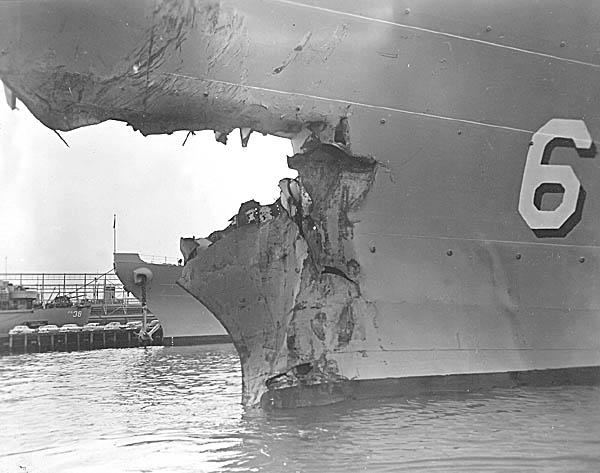
The collision occurred as the Wisconsin was executing a turning maneuver and the Eaton was attempting to overtake it, resulting in significant damage to the Eaton’s starboard side and the Wisconsin’s bow.
USS Wisconsin
The USS Wisconsin (BB-64) is a distinguished Iowa-class battleship of the United States Navy, known for its significant contributions during World War II, the Korean War, and the Gulf War.
Commissioned on April 16, 1944, it was designed to support fast carrier task forces, combining impressive speed with formidable firepower.
The battleship stands out for its size, measuring nearly 890 feet in length and displacing over 57,000 tons when fully loaded.
Its primary armament included nine 16-inch guns that could fire shells weighing up to 2,700 pounds over distances exceeding 20 miles.
Additionally, the Wisconsin was equipped with 20 five-inch guns, various anti-aircraft guns, and later, modernized with Tomahawk cruise missiles and Phalanx close-in weapon systems.
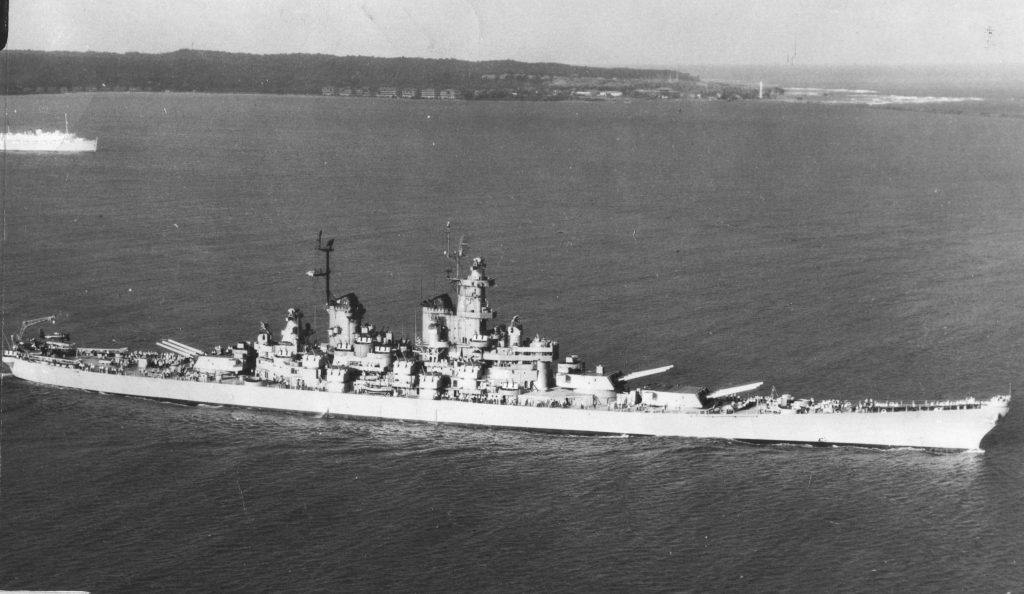 USS Wisconsin underway in the early 1950s.
USS Wisconsin underway in the early 1950s.
During World War II, the USS Wisconsin joined the Pacific Fleet and participated in key battles such as the Battle of the Philippine Sea.
It played a crucial role in the Iwo Jima and Okinawa campaigns by bombarding Japanese positions.
The battleship was also active during the Korean War, providing essential gunfire support for United Nations forces by targeting enemy positions and disrupting supply lines.
Throughout the Cold War, the Wisconsin was intermittently in the reserve fleet but was reactivated in 1988. Its final combat duty was during the Gulf War in 1991, where it again proved the value of naval gunfire by striking Iraqi targets.
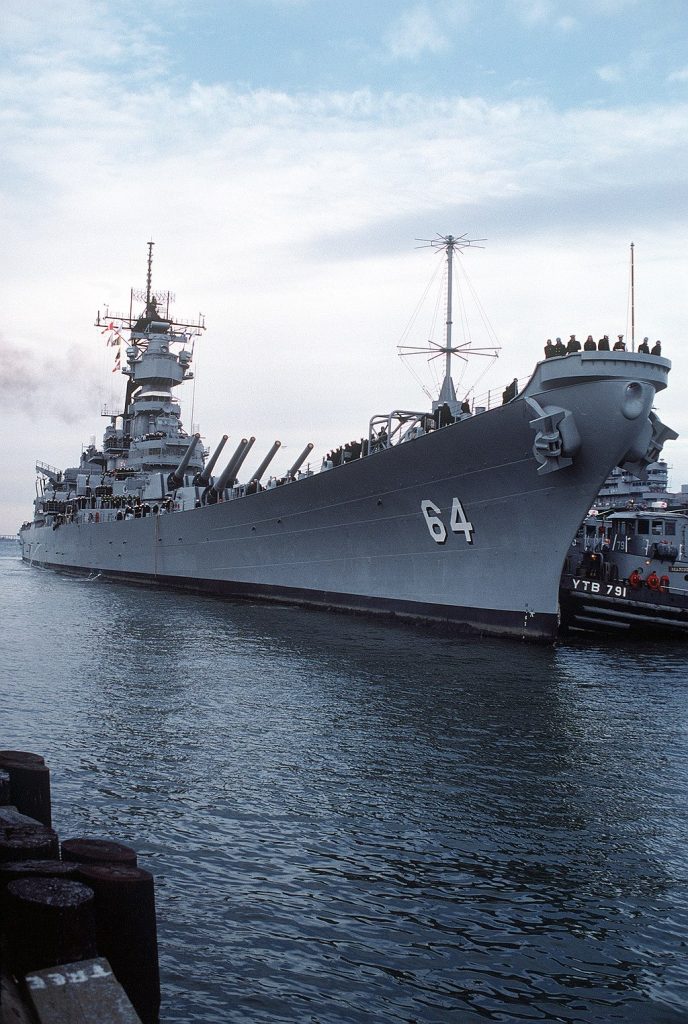 USS Wisconsin maneuvered into port, 1988.
USS Wisconsin maneuvered into port, 1988.
After its decommissioning on September 30, 1991, the USS Wisconsin found a new role as a museum ship, preserved at the Nauticus maritime museum in Norfolk, Virginia.
Today, it serves as a monumental exhibit, showcasing the maritime might and historical significance of U.S. naval operations in the 20th century.
USS Eaton
The USS Eaton (DD-510) was a Fletcher-class destroyer in the United States Navy, named after William Eaton, a notable U.S. Army officer and Consul to Tunis in the early 19th century.
The ship was commissioned on December 4, 1942, and quickly became an active participant in World War II.
It played a significant role in various operations across the Pacific, including the Solomon Islands campaign, the Marianas operation, and notably, the Battle of the Philippine Sea.
Equipped with five 5-inch guns, anti-aircraft guns, and torpedoes, the USS Eaton excelled in surface combat, anti-submarine warfare, and as an escort vessel.
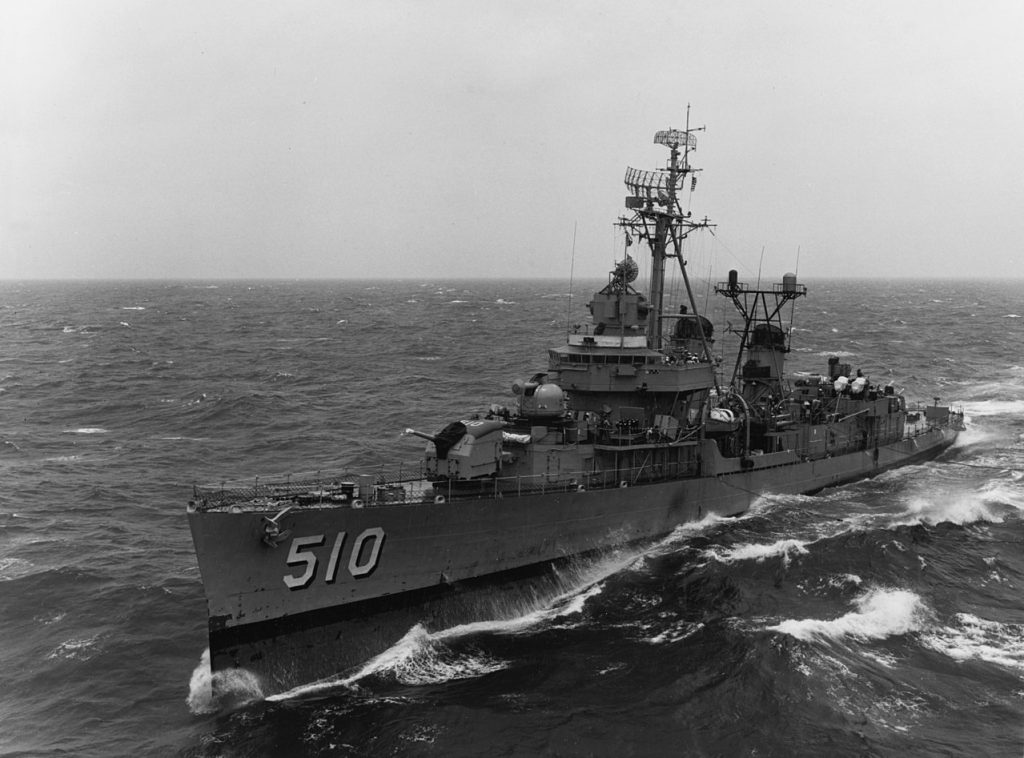 USS Eaton underway in the Atlantic, 1964.
USS Eaton underway in the Atlantic, 1964.
Following its World War II service, the USS Eaton was also active during the Korean War, where it provided naval gunfire support and performed carrier screening duties.
After the Korean War, it remained in service, participating in training exercises and serving as a test ship for new naval technologies.
The destroyer’s long and diverse career came to an end when it was decommissioned in 1969. Subsequently, in 1973, the USS Eaton was sold for scrap.
Lead up to The Collision
On May 6, 1956, both the USS Wisconsin and the USS Eaton were participating in a large-scale naval exercise off the coast of Norfolk, Virginia.
These exercises are designed to simulate real combat conditions, thereby providing the crews of the ships with valuable experience in handling their vessels under stress and in close proximity to other ships.
Such exercises typically involve multiple tasks like high-speed maneuvers, abrupt changes in formation, and mock combat scenarios, all intended to test the limits of the ships and their crews.
The immediate cause of the collision involved a complex interplay of high-speed maneuvers and miscommunication.
The USS Wisconsin was engaged in a turning exercise, a common maneuver intended to change the direction of the ship quickly.
This maneuver was particularly challenging due to the Wisconsin’s massive size and weight, which made rapid changes in direction cumbersome and slow in comparison to smaller ships like the Eaton.
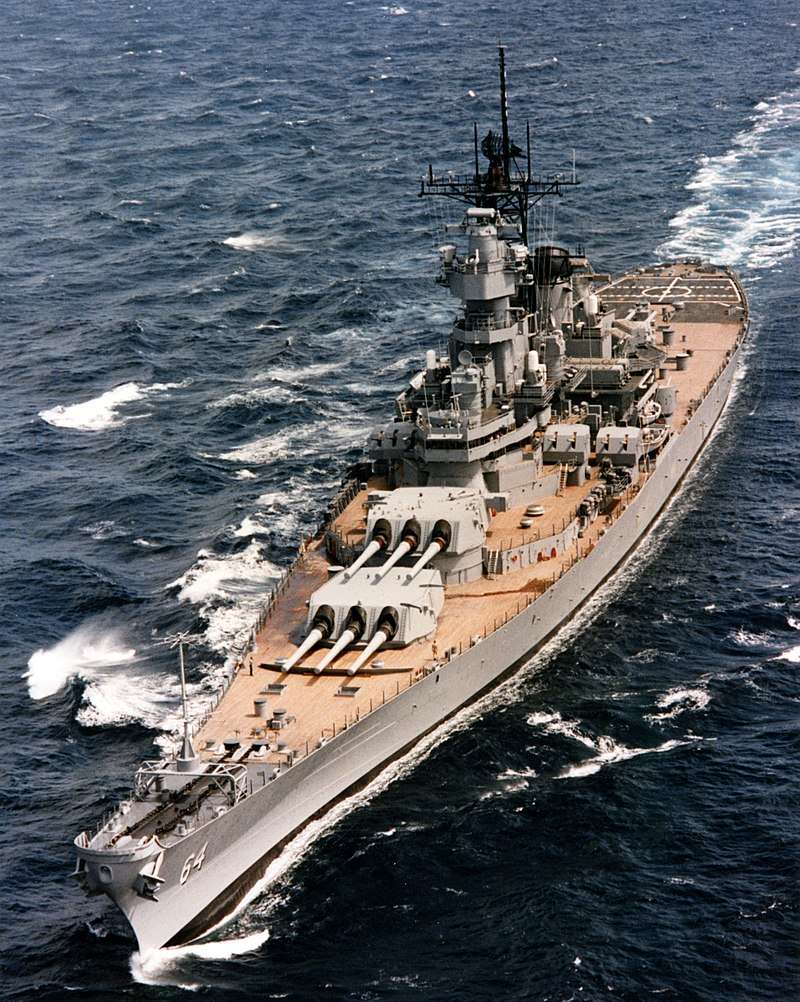 USS Wisconsin in the 80s.
USS Wisconsin in the 80s.
At the same time, the USS Eaton was overtaking the Wisconsin from the starboard side.
Overtaking maneuvers are also a standard part of naval operations, requiring precise communication and coordination between the ships involved to ensure safety.
These maneuvers are particularly risky in a training environment where ships are intentionally operating closer to each other than they normally would in non-exercise conditions.
The key issue that led to the collision was a breakdown in communication and coordination between the two ships.
As the Wisconsin began its turn, the Eaton, maintaining its course and speed, found itself on a collision path with the battleship.
The necessary signals or communications that should have coordinated the timing and specifics of these maneuvers either were not properly conveyed or were misinterpreted.
The adverse weather conditions also played a hand in the collision.
Although the exercise was being conducted in daylight, the area was covered in a thick fog, limiting the ships visibility.
 The destroyer was tiny in comparison to the Wisconsin.
The destroyer was tiny in comparison to the Wisconsin.
Given the limited response time once both ships were committed to their respective maneuvers, and considering the Wisconsin’s slow turning radius and the Eaton’s position, avoiding a collision became nearly impossible.
The Eaton’s last-minute attempts to change course were insufficient to clear the Wisconsin’s path, leading to the inevitable impact.
The Collision and Aftermath
As the USS Wisconsin executed its turning maneuver, its massive bow collided with the USS Eaton, which was in the process of overtaking the battleship on the starboard side.
The physical dynamics of the collision were stark — the Wisconsin, being one of the largest and heaviest battleships ever constructed by the U.S. Navy, imparted significant kinetic force upon the smaller Eaton.
The impact occurred amidships on the Eaton’s starboard side, causing substantial structural damage.
The force of the collision crumpled the destroyer’s hull, twisted its superstructure, and resulted in flooding in several compartments.
 A clear view of the damage inflicted to the Eaton from the collision.
A clear view of the damage inflicted to the Eaton from the collision.
The response of the crew on both ships was swift and disciplined, reflecting their rigorous training.
On the Eaton, damage control parties were immediately activated to address the flooding and structural compromises.
Efforts were made to stabilize the vessel to prevent further water ingress, which could have led to a more severe outcome such as sinking.
Emergency procedures were implemented efficiently, demonstrating the crew’s preparedness for such incidents, albeit usually expected in combat rather than training.
On the Wisconsin, the collision also prompted a quick reaction, though the damage was less severe due to the battleship’s robust design and larger size.
The crew assessed the damage to the bow, checked for any potential risks to the ship’s operational capabilities, and prepared for possible assistance to the Eaton.
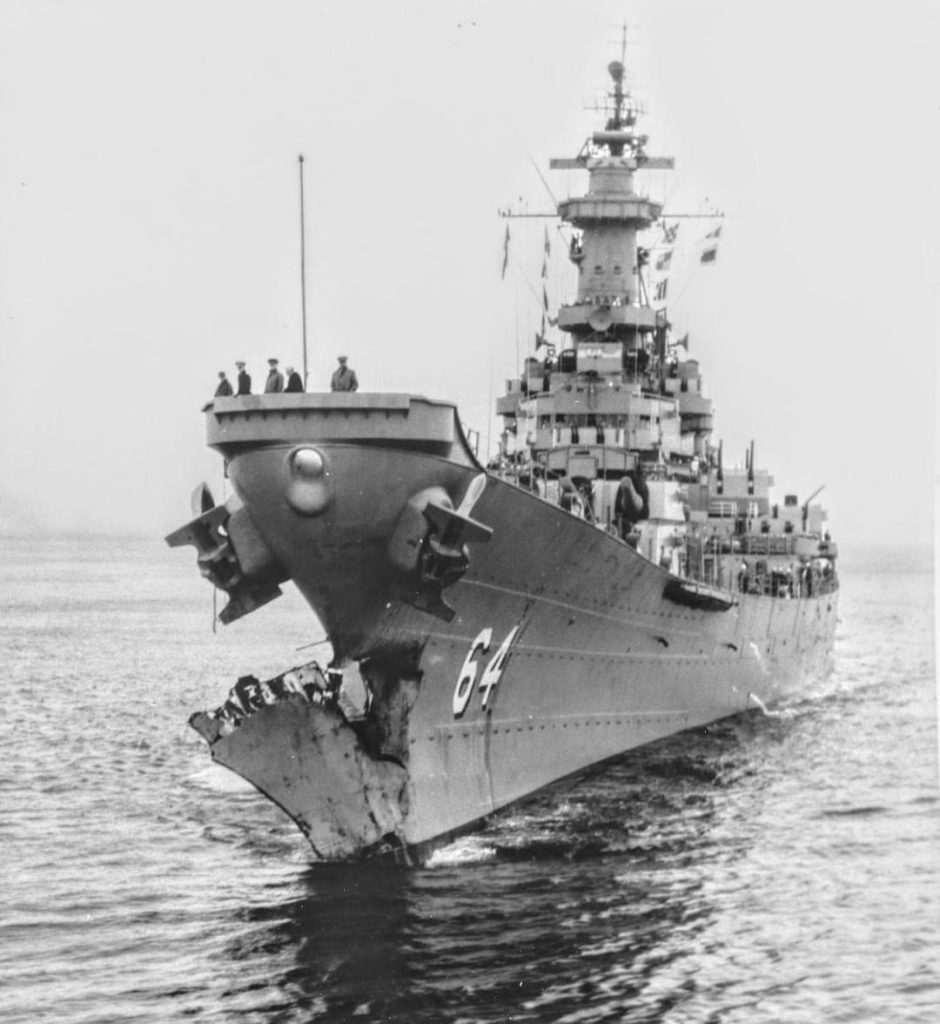 The USS Wisconsin’s damaged bow.
The USS Wisconsin’s damaged bow.
The physical damage to both ships necessitated significant repairs. The USS Eaton, suffering from severe damage to its hull and superstructure, was towed to the nearest naval shipyard.
The USS Wisconsin was taken to the Norfolk Naval Shipyard for her bow to be fixed. Her bow was replaced using the incomplete Iowa-class battleship USS Kentucky (BB-66).
A 120-ton bow section, which measured 68 foot (21 m) was taken from the Kentucky and used to replace the damaged bow section on the Wisconsin.
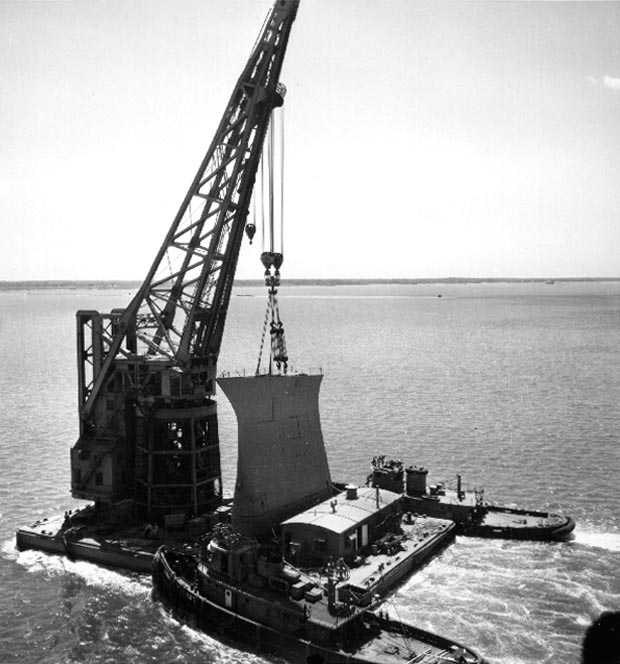 USS Kentucky’s bow being transported on a barge to be fitted to the Wisconsin.
USS Kentucky’s bow being transported on a barge to be fitted to the Wisconsin.
Post-collision, the Navy conducted a thorough investigation to determine the causes of the incident and to derive lessons to prevent future occurrences.
This involved analyzing communication logs, command decisions, and crew actions in the moments leading up to the collision.
The investigation highlighted deficiencies in communication and procedural adherence during the exercise, leading to changes in training exercises to enhance safety.